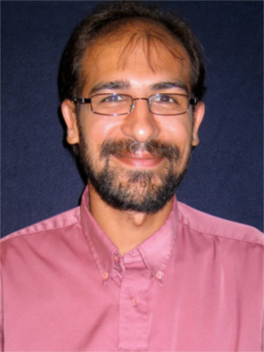
When Jean-François Lafont first became the interim chair of the Department of Mathematics in 2018, he had no idea he would be leading the department through a global pandemic. Nevertheless, in the last four years — now without “interim” on his title — Lafont has overseen a department that is not only surviving the pandemic, but thriving in the midst of it.
“The department had to go through a lot of adaptation on the teaching front — when our classes were switched to remote,” he said. “I think we've done really well with this”
Even in an unstable time, the department under Lafont's leadership has made substantial changes on all levels, starting at the undergraduate level, where it has managed a thriving actuarial program.
“Our actuarial science degree program has consistently ranked in the top 10 in the country, often even the top five,” Lafont said.
This highly successful degree program has been primarily run by Professor Chunsheng Ban. This year, the department is hiring two new faculty members in actuarial science.
“The goal is for the program to have the faculty resources to make it self-sustaining so it can continue to draw and train the best students,” Lafont said, adding that the new faculty will also contribute to the graduate program through the new Master of Actuarial and Quantitative Risk Management degree program.
Additionally, the department recently eliminated the Master of Mathematical Sciences degree option and replaced it with a Master of Arts.
“This provides students who were quickly advancing through the undergraduate degree the opportunity to get a master's degree with a 3+1- or 4+1-year option,” Lafont said. “At the PhD level, we've implemented a new applied math track. It used to be that all students went through the same theoretical preparation. Now there is a track that is perhaps more amenable to people who have an interest in that.”
At the faculty level, there have been new and continued research partnerships with the School of Earth Sciences, the Department of Physics and the College of Engineering’s Department of Computer Science and Engineering. In addition to the new collaborations, the Department of Mathematics has taken advantage of the newly popular modality of virtual seminars to bring attention to the department. The virtual and hybrid seminars have allowed Ohio State to have a wider variety of speakers and provided an opportunity for a wider attendance. People from all over the world have joined in to see virtual talks hosted at Ohio State.
“We hope to take many of the things like this we learned how to do during the pandemic into the future,” Lafont said.
As far as other plans, Lafont hopes to continue to advance the faculty profile. He also hopes to keep the postdoctoral program robust and continue with the successful placement of PhD students. Last year, even with many hiring freezes around the country, the PhD program had a 100% placement rate for new PhDs both in academia and in industry — with students getting jobs at places like Facebook and Google. In the end, Lafont says his ultimate vision for the department is that it continues to grow and thrive for the students and faculty.
“We've managed, despite the pandemic, despite hiring freezes, to maintain roughly the same faculty size,” he said. “With new initiatives at the college level, we hope to even expand.”
